The 2024 arrival of the first fully electric Porsche Macan was supposed to be simple. Out with the old gas car, although the German carmaker announced plans to produce the pair concurrently, and in with the new EV. However, for buyers not quite ready to make the switch, this presented a problem because, at some point, only the battery-powered Macan would remain.
Step into 2025, and the conversation surrounding the Porsche Macan has changed significantly. In January, rumors emerged suggesting that the carmaker was evaluating the viability of fitting this electrified best-seller with either a pure gas or a hybrid powertrain. By March, Porsche clarified that the ICE Macan would indeed exit production in 2026 as intended, making the EV the sole survivor. However, during its financial outlook meeting, it announced a possible new gas-powered SUV, although details remain scarce. It is also unlikely to arrive until 2030.
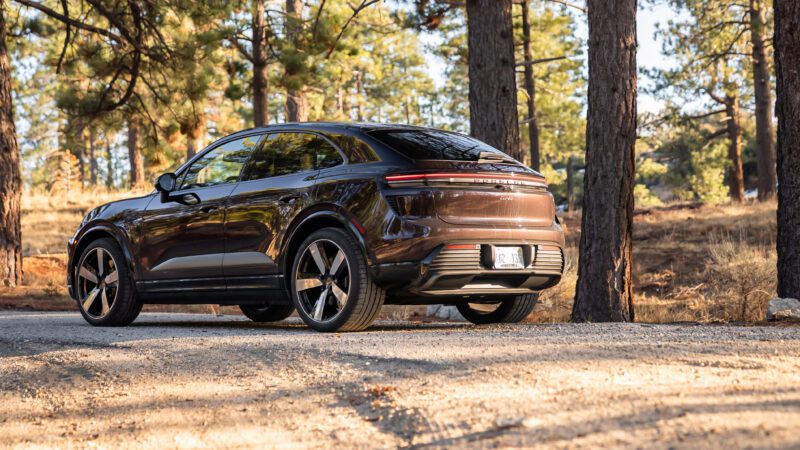
For now, there are numerous “what ifs” surrounding the Porsche Macan and the brand’s SUV lineup as a whole. However, given that the EV will soon be the only variant for sale, how well does its range-topping Turbo trim perform?
Like most other recent Volkswagen Group products, it rides on a shared platform. In this case, it’s the Performance Premium Electric (PPE) architecture that also underpins the Audi Q6 e-tron. It utilizes an 800-volt electrical system and a battery pack with a gross capacity of 100 kilowatt-hours, resulting in a net capacity of 95 kWh. As evidenced by the Porsche Macan Electric lineup, this setup can accommodate single-motor variants with rear-wheel drive or, like the Turbo, a dual-motor configuration with power sent to all four wheels.

Out on the road, the first thing that strikes you about the Porsche Macan Turbo is its speed. Powered by a battery pack that’s larger than what you get in a Taycan and developing up to 630 horsepower and 833 pound-feet of torque, this range-topper sprints to 60 mph in 3.1 seconds. For context, that’s four-tenths quicker than a Carrera GT. The crossover achieves this despite weighing over 5,300 pounds, or about 2,000 more than the V10 hypercar.
The big differentiator, of course, is that the Macan grants you unlimited access to that level of performance regardless of where you are. Despite it not generating those peak numbers when just puttering around town, the Turbo is rapid. It’s the kind of quick that doesn’t care whether you’re launching it from 20 or 120 mph; it always has more acceleration to give.
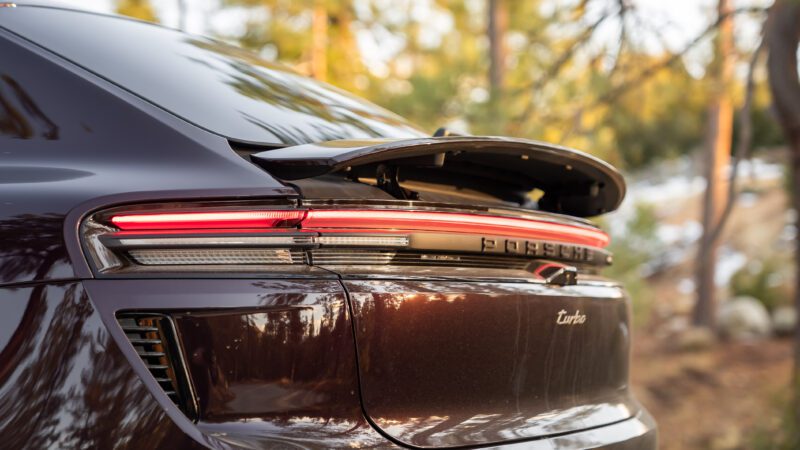
On a back road, you combine this seemingly endless performance with all-wheel drive traction, and you get a crossover that’s comfortable hunting down sports cars on a winding mountain road. Aside from generating a high level of mechanical grip, the Porsche Macan Turbo supplements it with a new traction management system that can respond to wheelspin in 10 milliseconds, a locking rear differential, torque vectoring, and an optional rear-axle steering system.
The result is a crossover that doesn’t hesitate to turn in the instant you ask it to. Simply point the wheel, and it will follow without complaint. Its chassis is properly equipped to handle the power dished out by its electric motors. And like the refreshed Cayenne lineup, this crossover benefits from two-valve dampers that allow it to adjust compression and rebound independently and, in the case of the Turbo, an adaptive air suspension system.
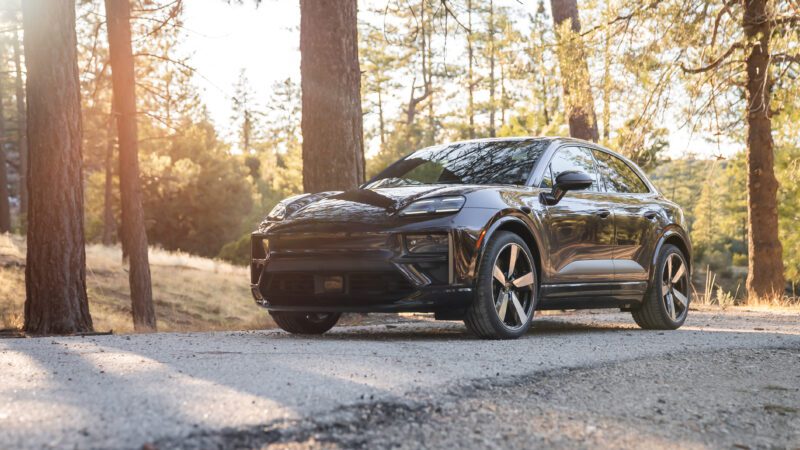
This setup, although lacking an active anti-roll system, effortlessly handles the Macan’s mass without delivering a driving experience that’s overly stiff. You definitely still feel the weight, but you also get the sense that all of its onboard systems are working in tandem to help you move as quickly as possible. This is a byproduct of Porsche’s separate investment in the PPE platform, with targeted upgrades to its rear end and suspension. As you’ll find out later, it’s also partially why the Macan sits at a higher price point than its Audi siblings.
Its electric power steering receives specific Porsche tuning, which is consistently the best within the entire Volkswagen Group. While it sports a quick ratio, it isn’t twitchy or overly responsive. It’s perfectly matched to the available grip and performance, and it augments the experience with a decent amount of feedback. It’s a similar story when it comes to this crossover’s braking performance. Its regenerative braking integrates neatly with its steel set, resulting in strong stopping power that never fades.

Dial back your speed, however, and the Porsche Macan Turbo settles into a daily commute with ease. Its adaptive air suspension soaks up bumps large and small, and its well-isolated cabin keeps most unwanted road and wind noise away. True to its predecessor’s spirit, this crossover remains an ideal daily driver with a genuinely sporty side.
On the range side of things, this power and performance come at a cost. While the dual-motor Macan 4 boasts an EPA-estimated range of 308 miles, the Turbo achieves a lower 288-mile figure. However, given that PPE is an 800-volt platform, the Turbo can charge at up to 270 kilowatts, allowing it to jump from 10 to 80 percent in 21 minutes.

The Porsche Macan Turbo I’m driving this week features a $2,480 Copper Ruby Metallic finish alongside an upgraded set of $3,510 22-inch wheels, adaptive 18-way adjustable sport seats, and a black leather interior. However, if you saw it parked on a side street, could you tell that it starts at $107,295, including a $1,995 destination fee? This tester comes with a price tag that exceeds $125,000. Yet, despite that, the average person will likely see it and assume you’re driving an entry-level Porsche.
Dimensionally, the new Macan is about two inches wider and three inches longer than its predecessor. Still, you’d be hard-pressed to tell at a glance. While the Turbo receives unique bumpers, its overall coupe-like shape and stance are reminiscent of what you’ll get in a $77,295 base model. There’s little that makes the range-topper instantly recognizable.
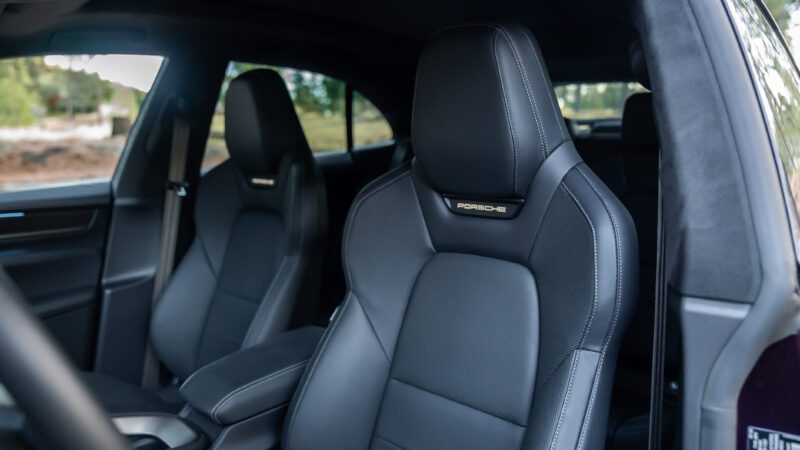
Inside, you’ll find a layout very familiar to what you get in the refreshed Cayenne, just scaled down. As standard, the electrified Macan gets a curved 12.6-inch instrument cluster and a 10.9-inch infotainment screen. My tester adds an optional 10.9-inch display in front of the passenger, which ensures that its dashboard is filled pillar-to-pillar with screens. However, Porsche graciously retains physical switches in the center console that maintain some sense of tactility.
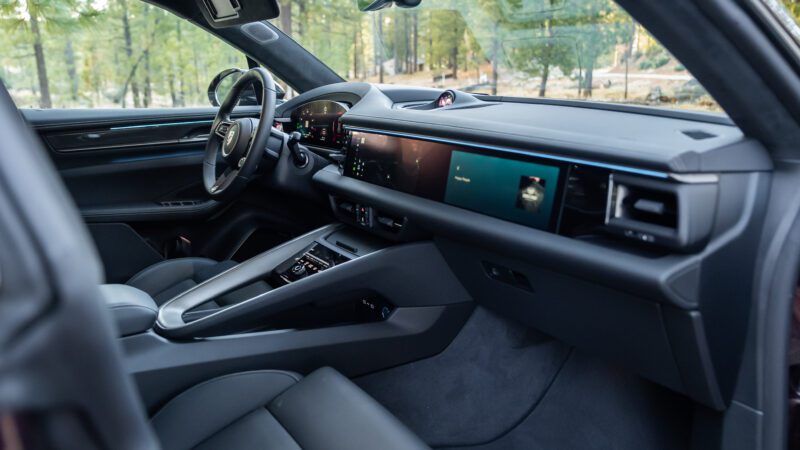
The benefits of the Macan’s upsizing are clearly visible when you factor in its interior space. Aside from having more passenger space, its cargo capacity with its seats folded rises to up to 46.5 cu-ft. This pairs with a second storage area up front, which adds an additional 2.9 cubic feet of storage space. As such, it gets closer to bridging the gap between the previous gas-powered Macan and the Cayenne. It falls much closer to the Maserati Grecale Folgore in terms of size.
In typical Porsche fashion, the fully electric Macan Turbo is practically flawless from a driving perspective. It’s rapid in a straight line and a willing dance partner in the bends without sacrificing daily comfort and usability. Yet, it manages to pair this performance with a sense of tactility and driver engagement that is usually absent in high-powered EVs.
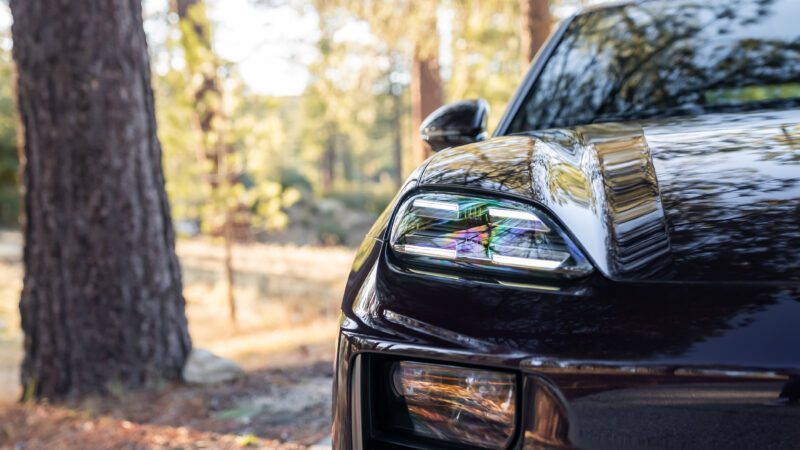
Starting at $107,295, the Turbo is quite expensive, especially when you factor in the premium the entire electric Macan range demands over its gas-powered predecessor. Yet despite this, this range-topping model isn’t instantly recognizable as something special. While the Macan itself is a lovely-looking vehicle, you’ll want more differentiation if you’re shelling out six figures.
However, while its price point is certainly elevated, its driving experience is one few electric crossovers can match.

